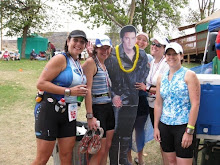athleta blog
The question keeps coming up…”What is Radical Self Care? It sounds like exactly what I need…but how do I get it?”
Wow. What a question.
I have been pondering this myself for several months, as my own needs have shifted and I have had to redefine my outlets and my sense of fulfillment and satisfaction in the world.
Here’s the tricky thing I’ve recently realized – radical self-care is as changing as our moods! Consequently, it requires not only a wide array of options, but also the awareness to match a need with a Self-Care Optimal Solution (S.O.S.)
In its most simple definition, radical self care is the bold act of putting your quality of life as a primary part of your life. It’s acting on the premise that your need for sleep, time out, socializing with your friends and exercising is JUST as important as getting the kids to soccer practice, doing laundry, and going to work. When we neglect our self-care, the tendency to spend too much money, eat too much food, lose our temper, get depressed, or drop everything and run to Tahiti increases. A balanced and vibrant life demands that we take our needs into consideration and act upon them. And while some things are beyond our control (we can’t fire our co-workers) other things are completely in our power if we open up to the possibility of allowing ourselves to seek and receive creative solutions.
When initially exploring radical self-care, it helps to first define your needs. Do you need more sleep? Motivation and support to get those workouts done? Do you need to place a ban on bringing in holiday cookies so you can keep your blood sugar and weight in check? Do you need to give yourself a break? What area of your life is lacking? There may be several, but choose one or two of the most acute areas to address first.
Next, determine your solution. This is where you get creative. Ask yourself, “How can I..?” You may have been saying, “I can’t” or “There’s no time, no one, no money for…” and that needs to STOP. When we think in this way, we block our ability to create new solutions to situations. We say no without giving our ingenious brains an opportunity to find a “Yes”. So instead, ask, “How can I..?”
Reach out to others. Ask them what they do, ask them how they do it. Share this concept and see if you can work together to find answers. Sometimes it’s easier to see solutions for others than ourselves!
Case in point: it’s hard for me to play. I have a very difficult time just cutting loose, being silly, and completely “unproductive”. So in the last month, I’ve been exploring what play means to me, what it looks like, and how I can gift myself that. I am working through a lot of judgments and beliefs about what I am “supposed to” do and how I am “supposed to be” that really have nothing to do with who I truly am! I really want to get finger paint and glitter and see what that leads to and I find it challenging to justify this simple desire (Problem #1 – the belief I have to justify anything about who I am or what I want). I’ve had exhaustive, repetitive conversations with friends and mentors about this topic. I’ve got some ideas now about what I need and I am actively making baby steps at changing how I live and operate in my life in a very fundamental way. I am working to integrate this notion that life is meant to be fun and enjoyable, not just about work and production and results (even if its correlated to things that I enjoy – like my career or athletic goals).
Next, branch out and get diverse with meeting those needs. Explore what fulfills you when you are sad, what you need when you are frustrated, what you need when you feel unappreciated or overworked. Different needs arise from different emotions. If you are feeling sad, you may need a hug from your daughter, but from your spouse words of appreciation may work better than a hug. The clearer we get on our needs and how to meet them, the greater our ability to increase the amount of joy and vibrancy in our life.
Finally – the best advice I’ve been given: “This is new. You don’t know it all yet. Just get out and try different things and you will find what works.” Let go of any expectation that it should work or has to work. Radical Self Care and your unique SOS’s is a new area of exploration! There WILL be a learning curve.
It’s encouraging and inspiring to me to know that you all are there, desiring and exploring this as well. I would love to hear how you are exploring Radical Self-Care, what the results have been, and what personal SOS’s you intend on implementing!
AIMEE GALLO is a marathon runner, indoor cycling coach, holistic nutrition counselor and personal trainer. When not out pursuing her athletic goals, Aimee is busy with her company, Vibrance Nutrition and Fitness, helping her clients meet their fitness and nutrition goals by utilizing a mind, body, and spirit approach… {more »}





















